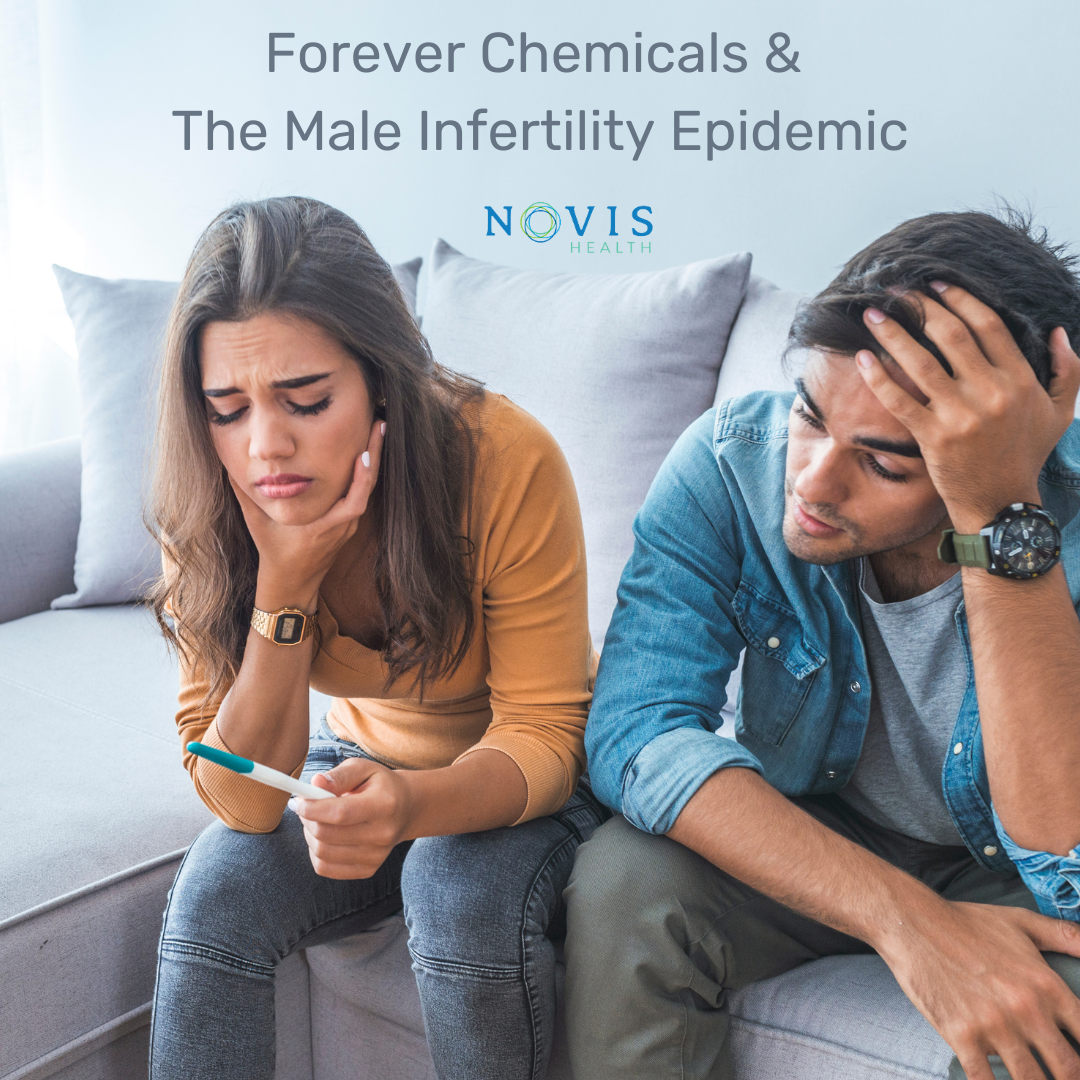Infertility in males is on the rise. An unexpected cause? Plastics and Forever Chemicals

PFAS (Per- and polyfluoroalkyl substances) are human-made substances from chemicals that can negatively affect human health (1). They are resistant to heat, water, and oil, so they do not break down naturally. In fact, they have the nickname “forever chemicals” because they can stick around for decades. PFAS are found in several products, such as: (2,3)
• Umbrellas
• Carpets
• Firefighting foam
• Tents
• Food packaging
• Fish from contaminated water sources
• Public water systems near industrial areas
Due to constant exposure, PFAS can also accumulate in humans. People can ingest the substances from food or water, which are then absorbed. They have been found in blood and at lower levels in breast milk and urine.(3)
Another chemical commonly used in manufacturing is bisphenol A (BPA). It exists in plastic and industrial glues, including containers that store food and drink (e.g., water bottles), water supply lines, and some dental sealants.(4) Due to its use in food packaging, humans, are continually exposed to the chemical. Researchers have found that BPA can seep into food or drink from containers made with BPA.(5) Over 90 percent of people in the United States have some measurable BPA level in their urine.(6)
What Are the Risks of Ingesting These Chemicals?
PFAS and BPA can have adverse effects on human health. These chemicals are known as endocrine disruptors due to their impact on hormone balance in humans.
BPA has a similar structure to a form of estradiol, a form of estrogen. When it binds to cells with estrogen receptors, it can signal to the cells to grow and divide rapidly, leading to cancer development.(7) In men exposed to high levels of PFAS, there is a decrease in semen quality, penile length, and testicular volume.(8)
BPA may also be harmful to the brain and prostate glands in fetuses, babies, and children. Because it is an endocrine disruptor, BPA can affect neurological development and impair its growth. Exposure to fetuses, infants, and children may occur through their mother’s breast milk, toys, food, and drink.(4,6)
How to Limit Exposure to These Harmful Chemicals ?
While it is impossible to avoid exposure to PFAS and BPA in everyday life, one can take measures to limit them. These include:(4,9,10)
Dry sauna bathing - induces sweating, which can help the body excrete BPA, phthalates, and other harmful chemicals.
Avoiding placing plastic containers in the microwave or dishwasher because heat can break them down over time, which may allow BPA to spread into one’s food or drink.
Using glass, stainless steel, or porcelain alternatives that do not contain PFAS or BPA.
When buying plastic products, looking for items labeled “BPA-free” or similar.
Limiting consumption of canned foods.
Avoiding produce treated with pesticides and herbicides (these have plastic residues).
Novis Health, has developed programs that may successfully reduce the toxic burden in our body. Everyone should have access to effective tools that reduce the damage caused by the constant bombardment of forever chemicals to our bodies. From infertility to cancers and many other chronic ailments, addressing major known risk factors today may prevent tragedies tomorrow.
References
3. Rhode Island Department of Health. PFAS Contamination of Water. n.d. Accessed April 3, 2021.
6. Braun JM, Hauser R. Bisphenol A and Children’s Health. Curr Opin Pediatr. 2011;23(2):233-239.
